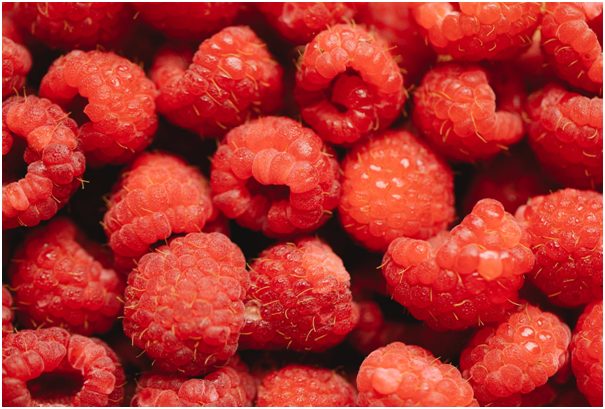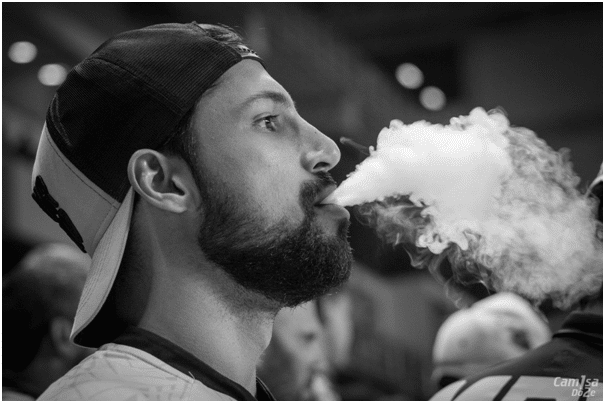People vape for various reasons. It’s no secret that trying many flavors of vape juice, also called e-liquid or e-juice, adds to the enjoyment of vaping and makes it a truly customized experience. Online vape stores offer a convenient way to explore a wide range of vape juice flavors and ingredients, ensuring vapers can find high-quality products tailored to their preferences.
Regardless of your reasons for vaping, if you want to make the most of your vaping experience and learn everything you can about vape juice, you are going to enjoy this guide!
In the following sections, you’ll learn everything you need to know about vape juice ingredients.
What is Vape Juice?

There are various vape flavors made with the finest ingredients on the market that people know about. However, it’s rare to find somebody who knows what is in vape juice, whether a newbie or a seasoned veteran. A vaping device that produces vapor uses vape juice. Vaping involves the inhalation and exhalation process.
A liquid’s nature changes depending on its composition when heated. For instance, if you heat water to a high temperature, it evaporates by changing from a liquid to steam. The same is true for vaping juice.
The temperature at which vape juice becomes vapor varies between 90°C and 200°C, depending on the vaping kit you have and your preference. When you inhale, it lets you experience a surge of flavor at a crucial moment.
Vape Juice Ingredients – What Are They?
A vaping liquid contains the following ingredients:
- Food-grade flavoring
- Nicotine
- Propylene glycol (PG)
- Vegetable glycerin (VG)–(or a combination of both PG and VG)
Let’s inspect each of these ingredients.
Food Grade Flavorings

Food-grade flavorings are the most crucial component of vape juice. By adding food-based flavors to vaping, manufacturers make it more enjoyable.
From fruits to desserts, cocktails to snacks, you can get your hands on multiple flavor options. There are many typical and safe flavors to choose from, but you can also try something creative, such as pizza or beer-flavored juice.
Nicotine
Nicotine is a chemical compound made up of nitrogen that originates from plants. The effects of nicotine can be both relaxing and stimulating. Even though it is not an integral component of vape juice, many users prefer it.
A strong hit can help calm you down after a busy day. You can choose the right nicotine level based on your experience and needs. You can start with 2-6 milligrams of nicotine per milliliter when you’re a beginner and go up to 12-18 milligrams per milliliter once you’re comfortable.
Propylene Glycol
Propylene Glycol is a petroleum-based by-product in cosmetics, food, and vape juice. This thin, clear liquid is easier to use and handle. Propylene glycol does not affect the taste of vape juice since it is tasteless. With every puff, you will get a powerful hit.
Clouds of vapor aren’t as dense, but they are easier to clean and don’t leave build-up behind. There can be differences in VG/PG content between vape juice bottles. Some variants use VG only or PG only.
Vegetable Glycerin
Vegetable Glycerin is a sweet and thick liquid from vegetable oils. The thick consistency of VG assures you will enjoy more significant clouds of vapor. The FDA has approved VG as a chemical that is “recognized as safe” for human consumption.
Adding this liquid to your vape juice can make it sweeter. It is easier to vape VG-based fluid on the throat, but the general experience can be uninspired.
A variety of everyday foods contain PG and VG, both of which manufacturers classify as “safe for consumption.” However, some individuals may be allergic to PG. It usually involves a sensation of irritation or tingling in the throat. If this occurs, it is best to switch to VG-based e-liquids, and you can consult your doctor if you have an allergy.
PG and VG: Are They Safe?
Studies have shown that apart from allergic reactions, both PG and VG are “safe” ingredients in vape solutions. The only reason for fearing something simply because you can find it in a dangerous product makes no sense. Additionally, if you consume too much of anything, it becomes toxic. The Igor Burstyn review of the chemistry of vaping devices is one of the most cited studies by proponents of vaping for precisely this purpose.
According to Burstyn’s study, the goal was to compare the concentrations of chemicals detected in the cloud with those deemed acceptable in the workplace. According to his research, most contaminants in the vapor that people believe we should worry about exist only at too low a level to cause harm.
Vape Juices Other Ingredients

We all know that e juice primarily comprises nicotine (optional), vegetable oil or propylene glycol (or a mix of both), and food-grade flavoring. On the packet of your favorite vape juice, you may find some other ingredients listed depending on the flavor. These are scientific names for flavor compounds.
To ensure quality and flavor, flavors for vaping liquids will rely on developed and tested quality and taste. You get some pretty unique flavor combinations when you mix flavors, making vaping a popular choice among many users.
Conclusion
There are four primary vape juice ingredients, including food-grade flavoring, nicotine, propylene glycol (PG), vegetable glycerin (VG)–(or a combination of both PG and VG), and food-grade flavor.
However, there are also other vape juice ingredients. Hopefully, this article has provided you with the knowledge you need to make sure the flavor and quality of your vape juice are top-notch.






